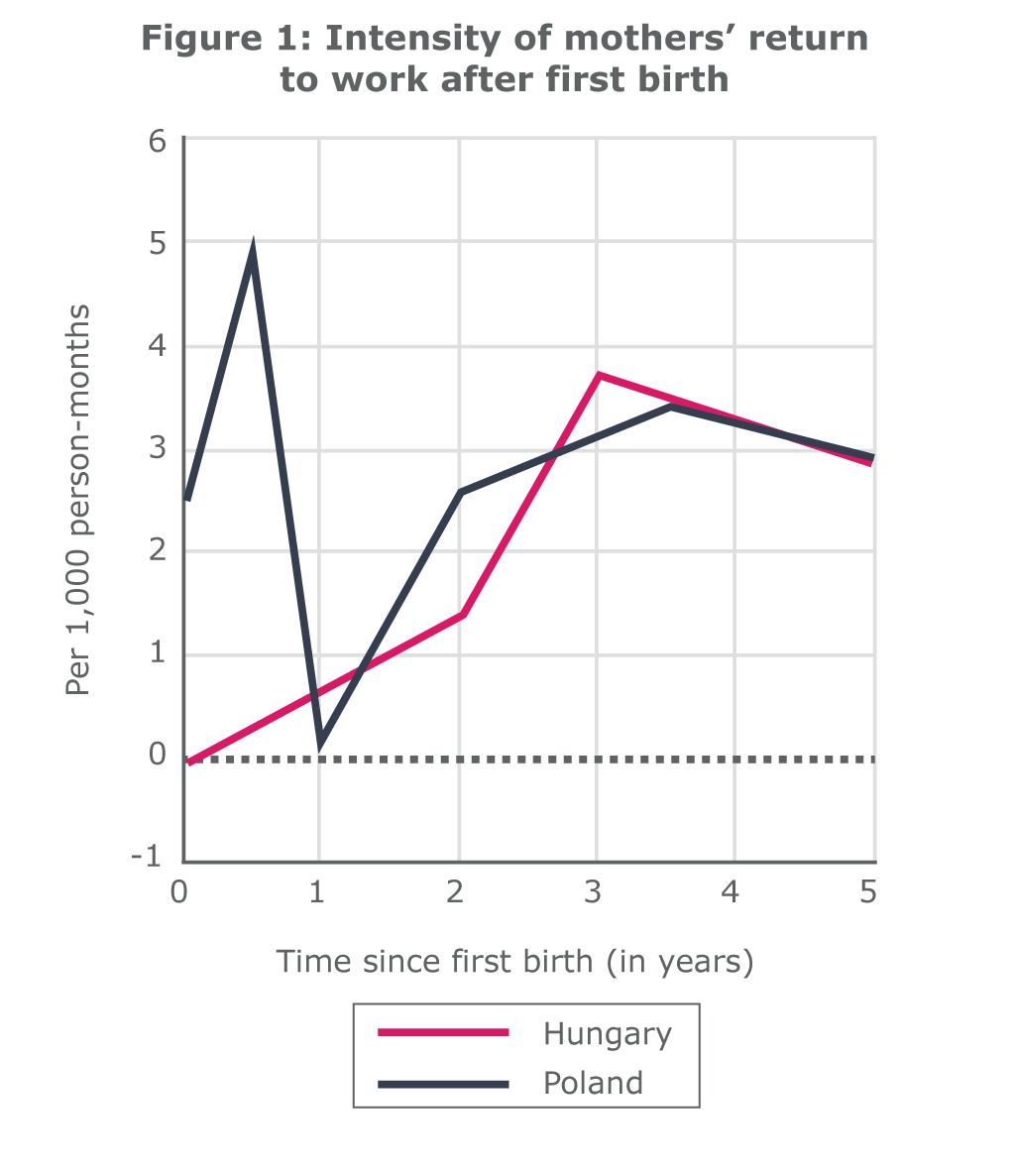The European Commission’s new roadmap on work-life balance for families seeks to improve labour market participation of women. Women’s employment, asserts the Commission, is “tightly linked to the distribution of work and family responsibilities between men and women” and, consequently, gender gaps in pay and pensions [1].

Source: [2], see below.
The roadmap itself was presented in response to political circumstances—namely, the failure of the 2008 proposal for a new directive on maternity leave, which languished in negotiations until it was withdrawn this year. But the Commission’s broader concern is that varying national policies lead to social and economic inequalities between member states. In fact, parental leave schemes have a wide range of policy-relevant consequences. For families it is a matter of family and career planning, for firms a matter of talent and costs, and for governments of fertility, equality, competitiveness and solidifying popular family structures.
The experience of Hungary and Poland indicates that parental leave policies do indeed affect the calculus of families and firms and therefore deserve a place in the debate.
WORK IN POLAND, CHILDREN IN HUNGARY
In our recent study [2], we selected these two countries because they offer different models of leave but share enough political, economic and historical commonalities to control for confounding factors. Our findings show different schemes affect the likelihood of having a second child and (re)entering employment for women already on parental leave.
We found that Hungary’s fairly generous, universal (albeit tiered) leave system—which grants employed mothers 70% of their pre-maternity salary for 2 years and a gradual reduction of payments thereafter—increased the likelihood of second births while on leave. It slowed mothers (re)entry into work, however, potentially resulting in a loss of human capital among Hungarian women compared to their Polish counterparts, who returned to work much more quickly. In Poland, employed (“insured”) mothers were granted 100% of their salary but for only 4 to 5 months, after which payments dropped off sharply to a means-tested minimum.
Figure 1 shows the intensity of mothers’ return to work over time in both systems, responding to the payment “cliffs” described above: at 2 years in Hungary and 6 months in Poland. The reactions are almost opposite: The gradual reduction of payments until the child’s third birthday motivated Hungarian women to intensify their return after the cliff. In Poland, the precipitous drop in payments led the rate of re-entry to spike before, then bottom out by the end of Year One. Together, the results indicate families are generally willing (and able) to forego some of their income, perhaps, but not all of it.
Ultimately, we can conclude that better paid parental leave involved certain advantages and disadvantages. A good parental leave policy should take into account the effects of leave on both couples’ childbearing and women’s employment. Extended periods of leave clearly help women to conceive their second child quickly after the first but they also delay women’s return to paid work. The delay can affect their future performance in the labour market, resulting in the adoption of traditional divisions of labour within families—the same arrangements that contribute to pay gaps in the first place.
Anna Matysiak, Wittgenstein Centre, Austria, and Ivett Szalma, Swiss Centre of Expertise in the Social Sciences (FORS), Switzerland
[1] European Commission Roadmap: “New start to address the challenges of work-life balance faced by working families”, August 2015, p. 1.
[2] Anna Matysiak and Ivett Szalma: Effects of Parental Leave Policies on Second Birth Risks and Women’s Employment Entry, Population-E, 69 (4), 2014, 599-636